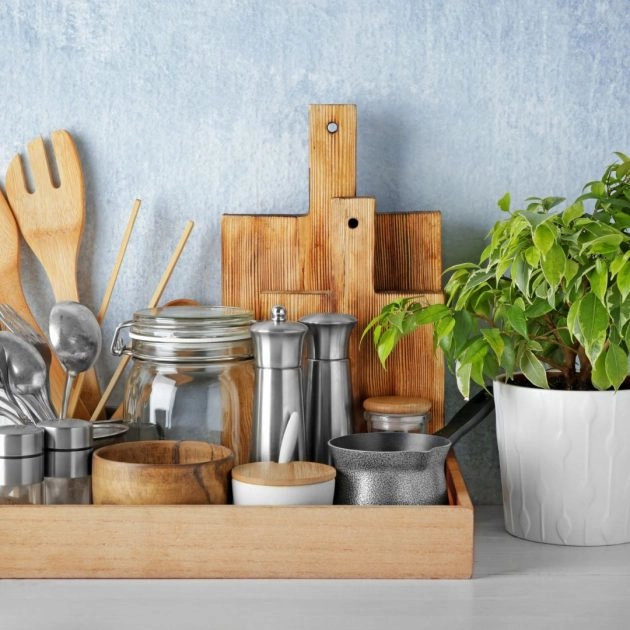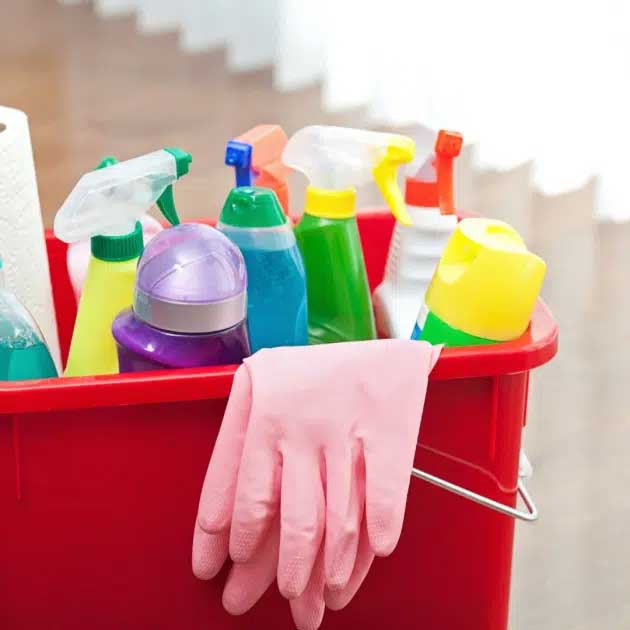Introduction: Detox My Kitchen
If you’re planning on doing a detox this year, don’t forget about your kitchen as well. What? You heard right, your kitchen probably could use a little clean-up too! Did you know that many of the toxins in your kitchen can be hazardous to your health?
When it comes to decluttering our homes, our kitchens are often the most neglected and overlooked. We keep every kitchen gadget we ever bought, half-used bags of chips and cereals, and a variety of condiments that have been sitting in the fridge for months (or longer).
That’s why it’s important to detox your kitchen, get rid of all the unhealthy, processed foods, and replace them with fresh, nutritious options.
It’s time to do some detoxing in our kitchens. Let’s get rid of the excess so we can start enjoying the space again. Here are some easy tips on how you can get started.

7 Tips To Detox My Kitchen
Clean Out The Pantry And Cabinet
You may be wondering “What’s the first thing I should do to detox my kitchen?” Start by taking everything out of your pantry and giving it a good cleaning. That includes wiping shelves, scrubbing drawers, and sorting through everything that was inside.
Now is the time to get rid of anything that has expired or contains unhealthy ingredients like added sugar or preservatives. You can donate any unopened items you don’t want to keep or throw them away if they’re past their expiration date.
Having an organized pantry makes it easier to access healthy foods when cravings strike. Take the time once a month to go through your pantry items and toss anything that’s expired or unhealthy.
You should also check labels for added sugar, unhealthy fats, sodium levels, and other additives that could be lurking in processed foods. Take this opportunity to stock up on healthier items like whole grains, nuts, seeds, dried fruits, etc., so you always have something healthy on hand when hunger strikes!
Now go through all of your cabinets one at a time and remove any items that are no longer useful or needed. Donate unopened nonperishable items to a local food pantry if you can, and discard anything broken or damaged beyond repair.
Pay attention to how many dishes, utensils, mugs, glasses, etc., you have; it may be beneficial to invest in matching sets for a more organized look.
Clean Out The Fridge
Take out all of your food items and throw away anything that has expired or gone bad. Then make an inventory by writing down everything you have in your fridge. This will help you identify any unnecessary items you may have been holding onto—like that jar of pickles from two years ago—and give you an idea of what needs to be replenished soon.
Stock Up On Healthy Foods
Now that your pantry is empty, it’s time to refill it with healthy items only! Make sure you have plenty of whole grains like quinoa and oats as well as nuts and seeds for snacks. Choose canned goods with no added sodium or sugar like beans and legumes – these make excellent sources of protein!
And don’t forget about frozen fruits and vegetables – they are just as nutritious as fresh ones but last much longer so you can save money while still eating healthy!
Clean Up The Countertop
Next up is your countertop! Go through all your appliances with a fine-toothed comb and donate any devices that haven’t been used in years.
If there are appliances on the countertop that don’t need to be there (like a blender used once a year), try storing them away in a bottom cabinet or appliance garage so they’re still accessible but not taking up precious real estate on your countertop. Wipe down any surfaces and clean off any sticky residue before moving on to the next step!
Organize, Organize, Organize
Organization is vital when it comes to keeping track of what you have in your pantry at all times. Group similar items together (like all canned goods) so they are easy to find when needed. Label each shelf so you know what goes where – this will save time when putting things back after shopping trips!
And use storage baskets or containers for smaller items like nuts and seeds which can easily get lost in larger cabinets or drawers. This way, everything will be kept neat and tidy without clutter everywhere!
Take Stock Of Cleaning Supplies
Cleaning supplies often contain harsh chemicals that can irritate the skin and respiratory systems. Try using natural cleaning products like baking soda and vinegar or even essential oils for an all-natural approach to cleaning your kitchen. If you need something more powerful than basic ingredients, there are plenty of eco-friendly options available at most grocery stores.
Small Changes Make A Big Difference
The first step is to take a look around and make small changes. For example, consider replacing plastic containers with glass containers, which are safer and easier to clean.
This simple switch will help reduce exposure to toxic chemicals in plastic containers, such as BPA and phthalates. Also, try swapping out non-stick pans for stainless steel or cast iron skillets, as the non-stick coating is also known to contain toxins.
Conclusion: Detox My Kitchen
Once you’ve finished decluttering your kitchen, take some time to appreciate your hard work! You should be proud for taking control of this task—it’s no easy feat!
Now that you’ve created some breathing room in your kitchen, consider investing in organization solutions like drawer dividers and lazy Susan’s so everything has its place when it comes time for cooking dinner or baking something delicious.
Detoxing your kitchen is essential if you want to live a healthier lifestyle! Small changes like switching out plastic containers for glass ones or replacing non-stick pans with cast iron skillets can make a big difference in reducing the number of toxins in your home environment.
Additionally, taking stock of the cleaning supplies you use and organizing your pantry will help make sure you have healthy options available when cravings strike! With these tips in mind, it’s easy to start detoxifying your kitchen today!
Need a little extra guidance? Download my free guide to Building A Better Kitchen to learn how to make your kitchen a healthier and less cluttered place to be.
***Disclaimer: This post is for informational purposes only and should not be construed as medical advice***



